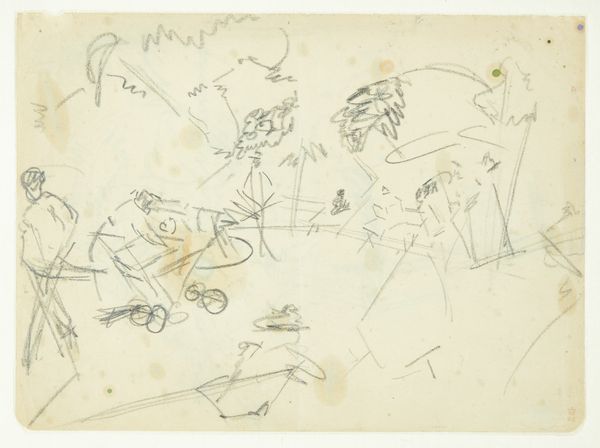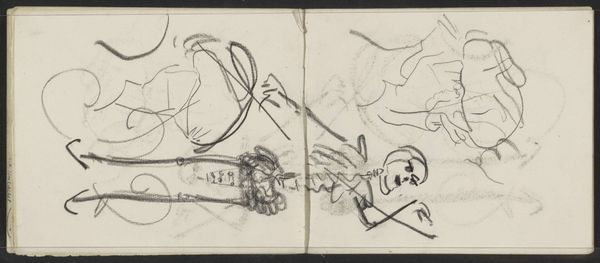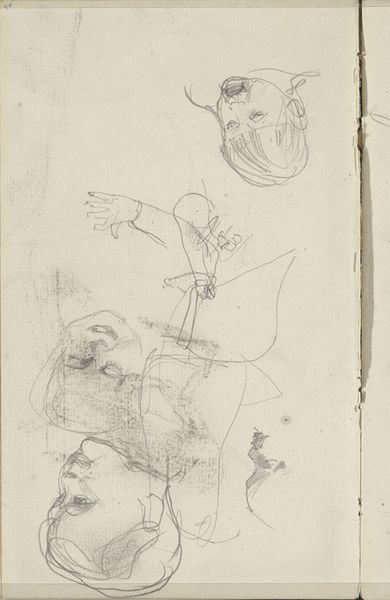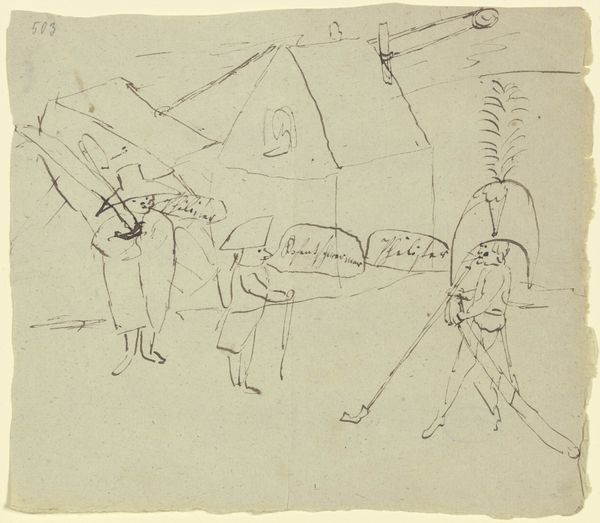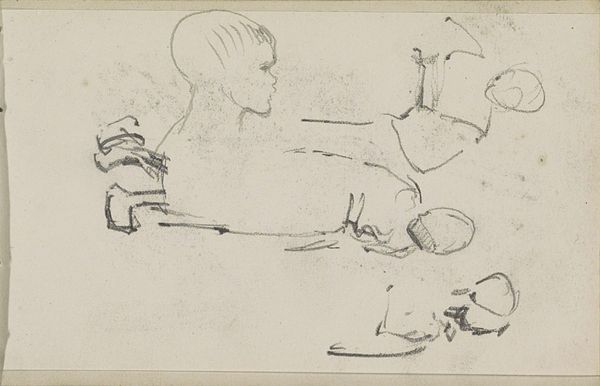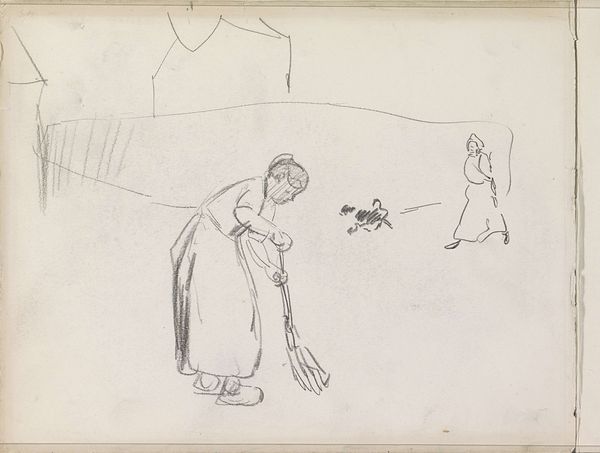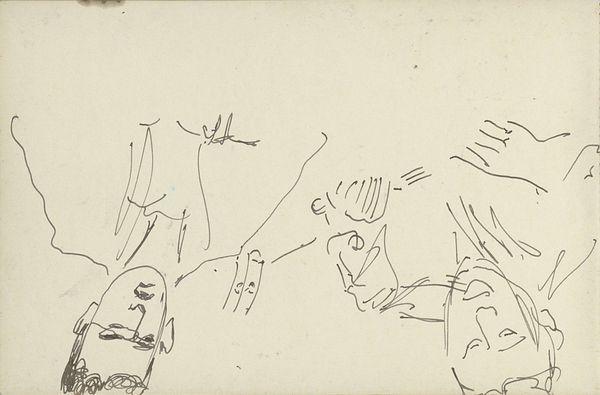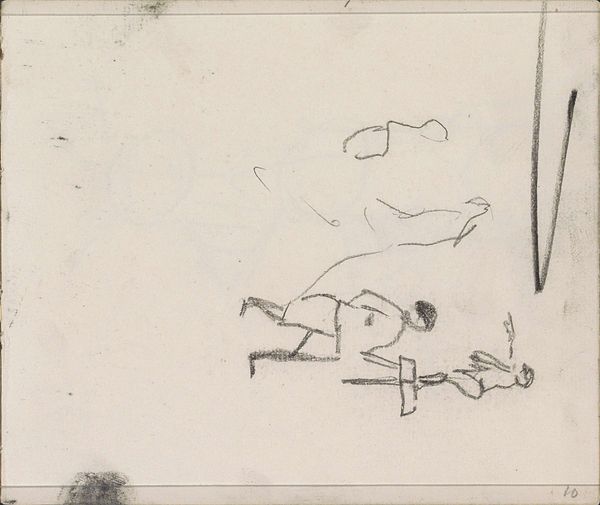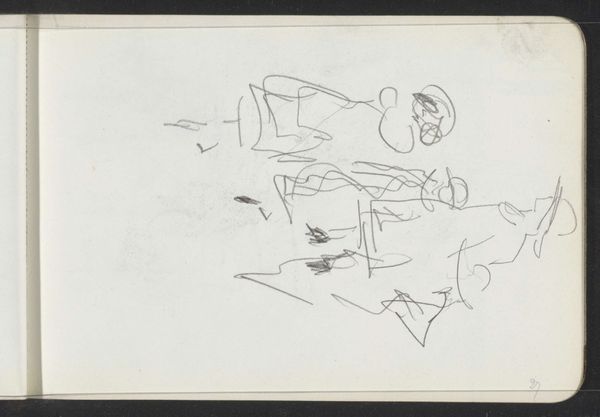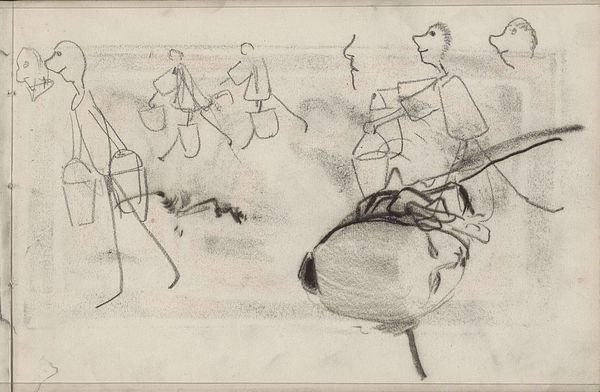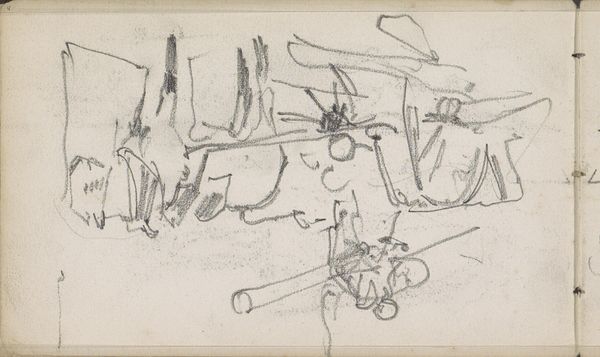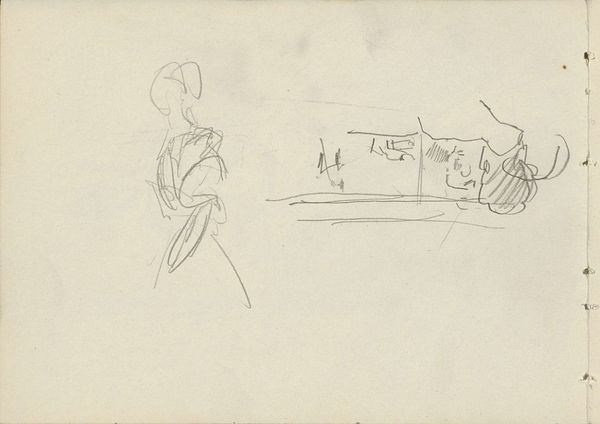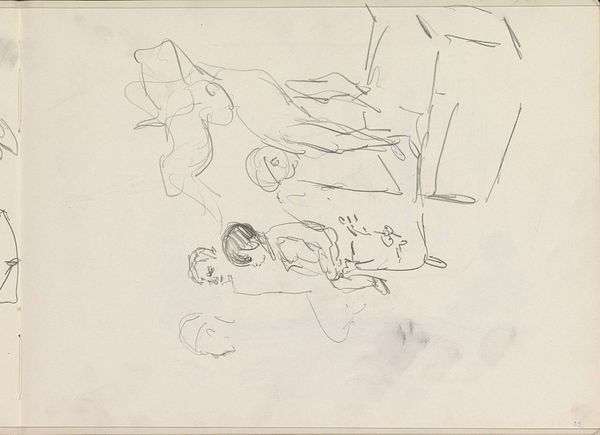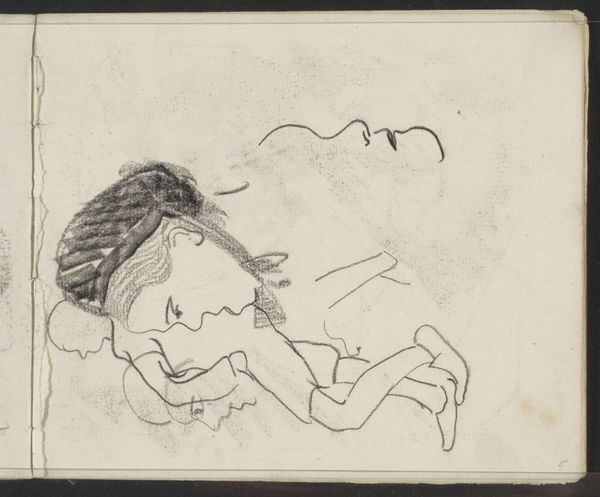
drawing, paper, ink
#
portrait
#
drawing
#
comic strip sketch
#
imaginative character sketch
#
quirky sketch
#
sketch book
#
paper
#
abstract
#
personal sketchbook
#
ink
#
idea generation sketch
#
sketchwork
#
geometric
#
expressionism
#
sketchbook drawing
#
storyboard and sketchbook work
#
sketchbook art
Copyright: Public Domain: Artvee
Curator: This whimsical drawing is entitled "With the Dot" created by Paul Klee in 1916, rendered in ink on paper. Editor: It feels like a peek into a joyful, slightly bizarre dreamscape. These figures, with their geometric bodies and quirky faces, look as if they’re floating. There's an air of carefree improvisation that I just adore! Curator: Absolutely, the spritely, angular figures definitely encapsulate Klee’s tendency toward the childlike and surreal, even during the turmoil of the First World War. Remember, Klee was deeply involved with Der Blaue Reiter group before the war. Editor: The composition’s rather peculiar, isn’t it? That large, looming black orb—or “dot”—seems to exert a gravitational pull, drawing all these stick-like beings into its orbit. Curator: You’re spot-on about the orb, which anchors the whole composition. But to contextualize the image, one might interpret this drawing through the lens of Klee’s exploration into the spiritual and his desire to visualize the unseen. Editor: Ah, so the dot’s less a physical object and more of a symbolic nexus! I like that idea. To me, it hints at Klee seeking an artistic bridge from representation to abstraction in ways that might express a different vision of the world. The figures themselves almost feel like automatons. Curator: Yes! These are figures teetering on the brink between human form and pure abstraction. The mark making embodies this concept that humanity is constantly changed through different structures and institutions. Also consider how the war shaped art creation. Editor: You know, looking at it again, it's got that haunting quality I usually find so compelling in sketches. They feel like notes jotted down by the subconscious, which resonates when pondering history! I imagine them frolicking around their inky god-orb for eternity... Curator: That resonates. I see how Klee's ability to distill complex human experience into simple lines is one way he engages in socio-political reflection without explicit visual commentary. Thank you for drawing me into this whimsical vision of art during that moment. Editor: My pleasure, diving into it from an expressive angle gives us, I think, different access into the work's emotional potential. Thanks for bringing a piece of history into our dialogue!
Comments
No comments
Be the first to comment and join the conversation on the ultimate creative platform.
